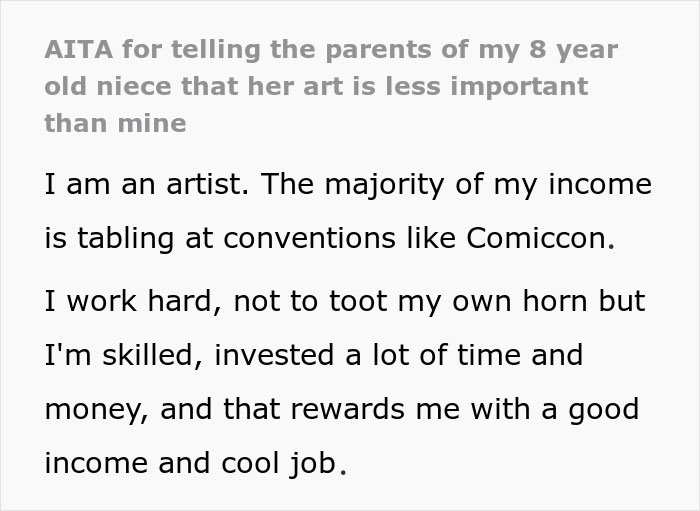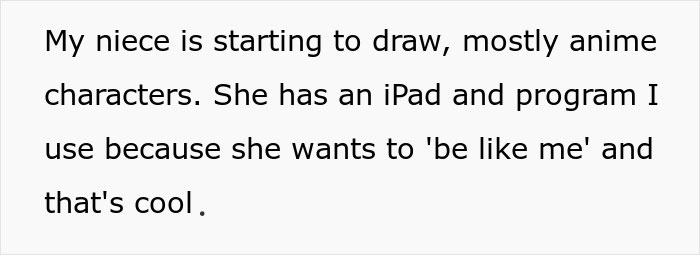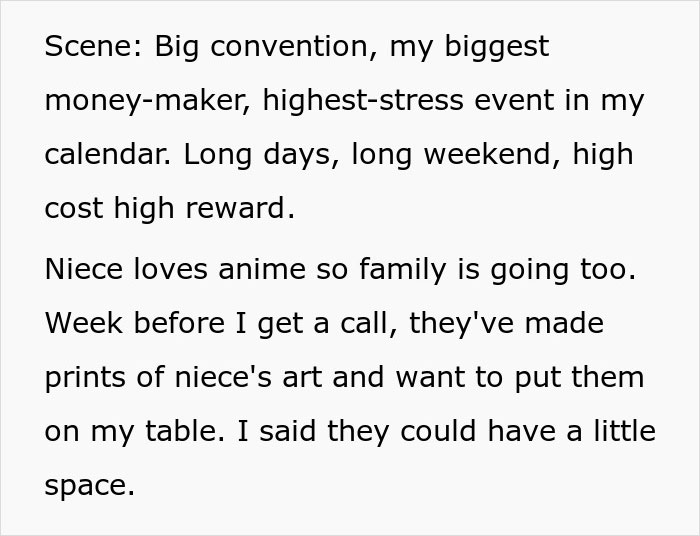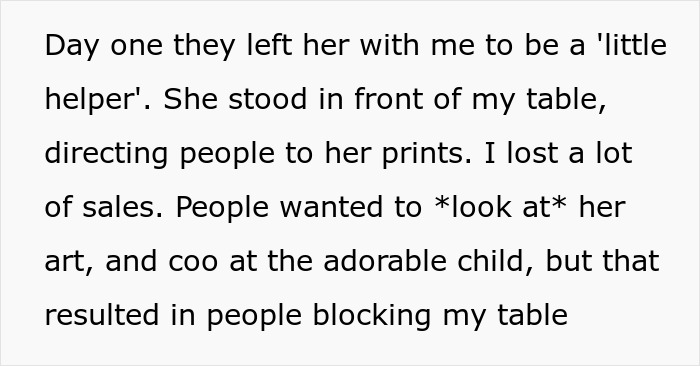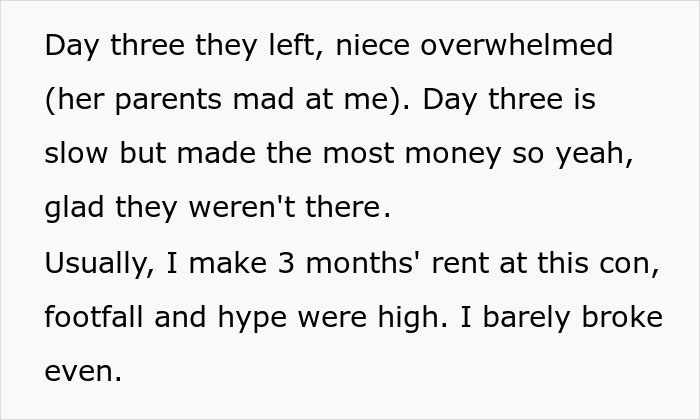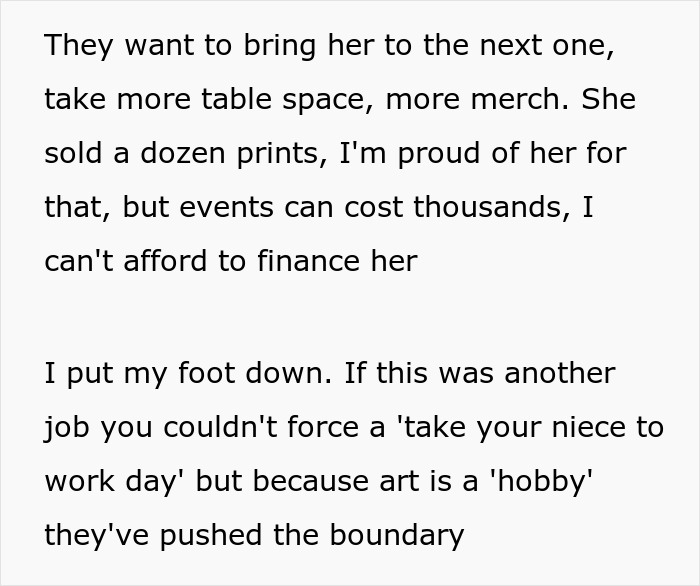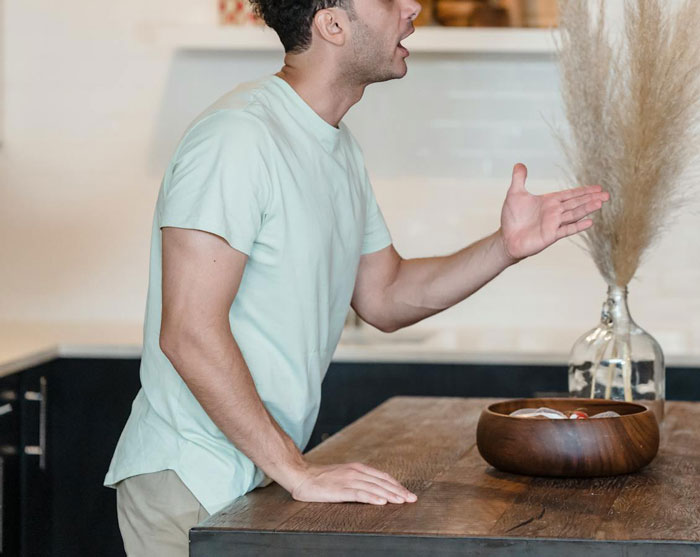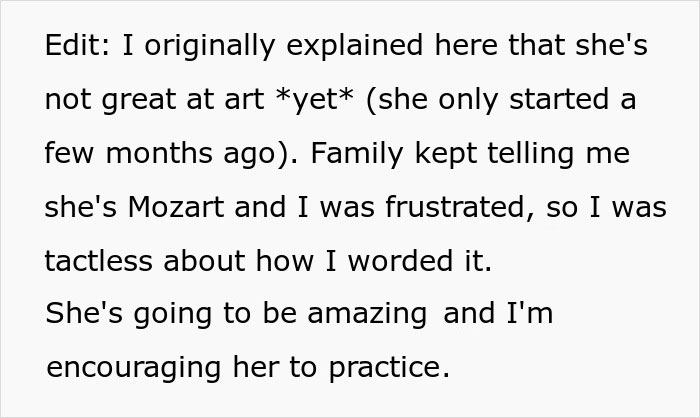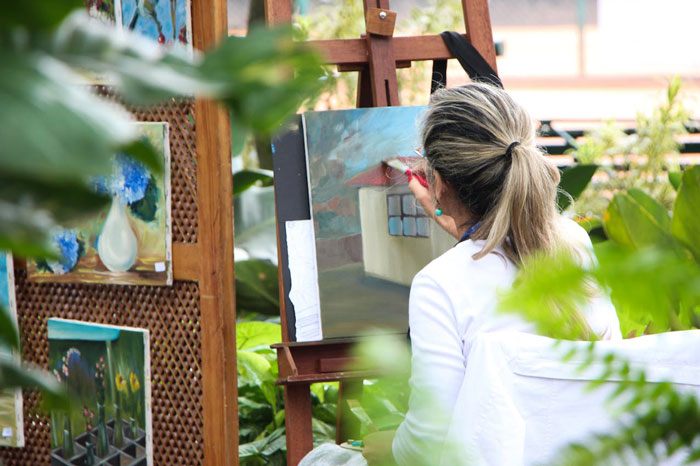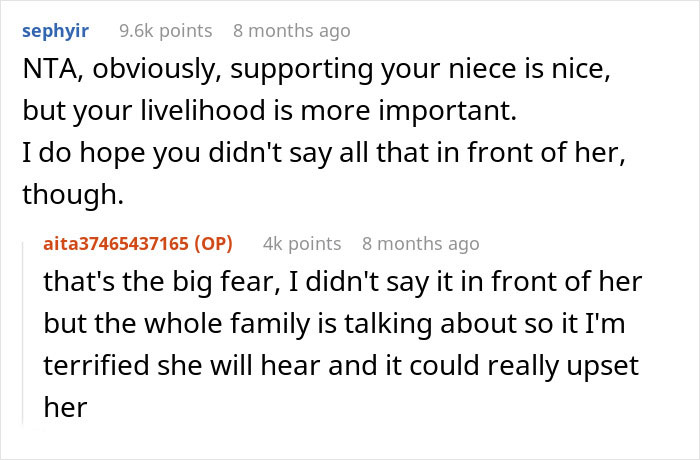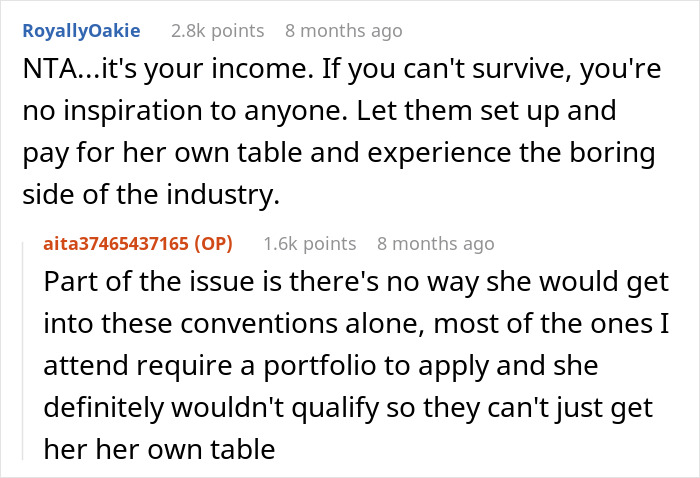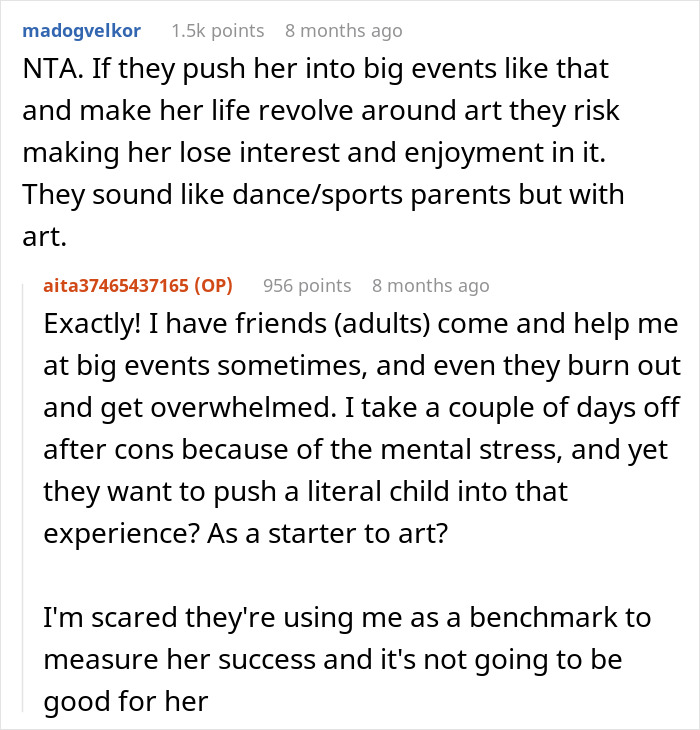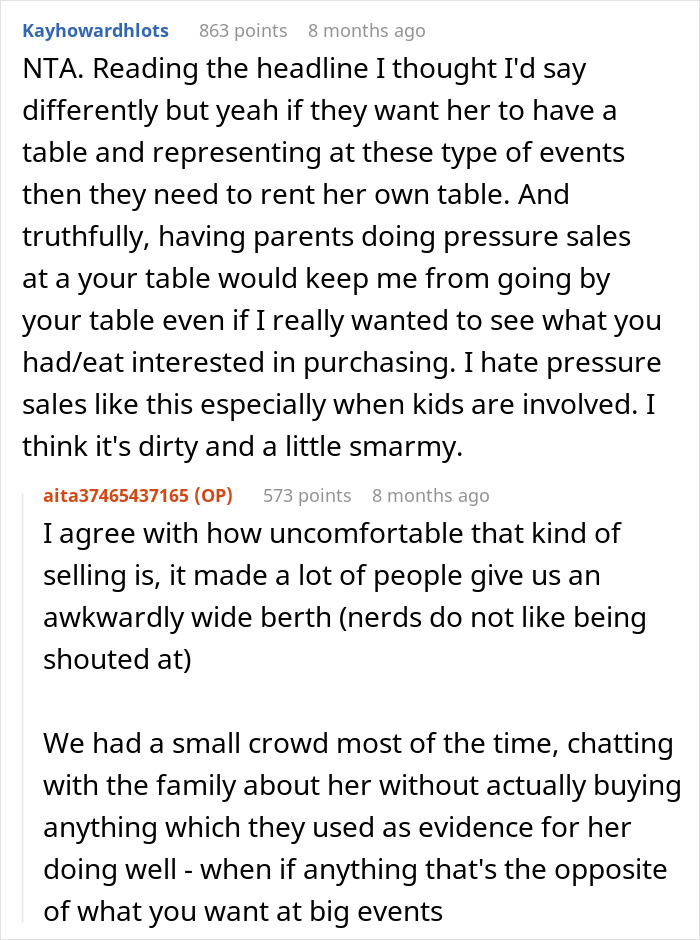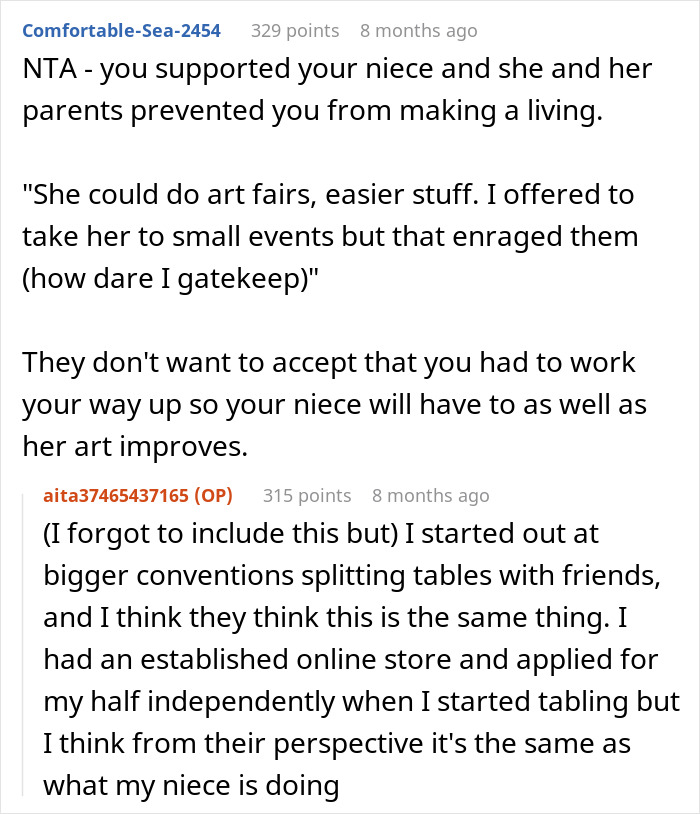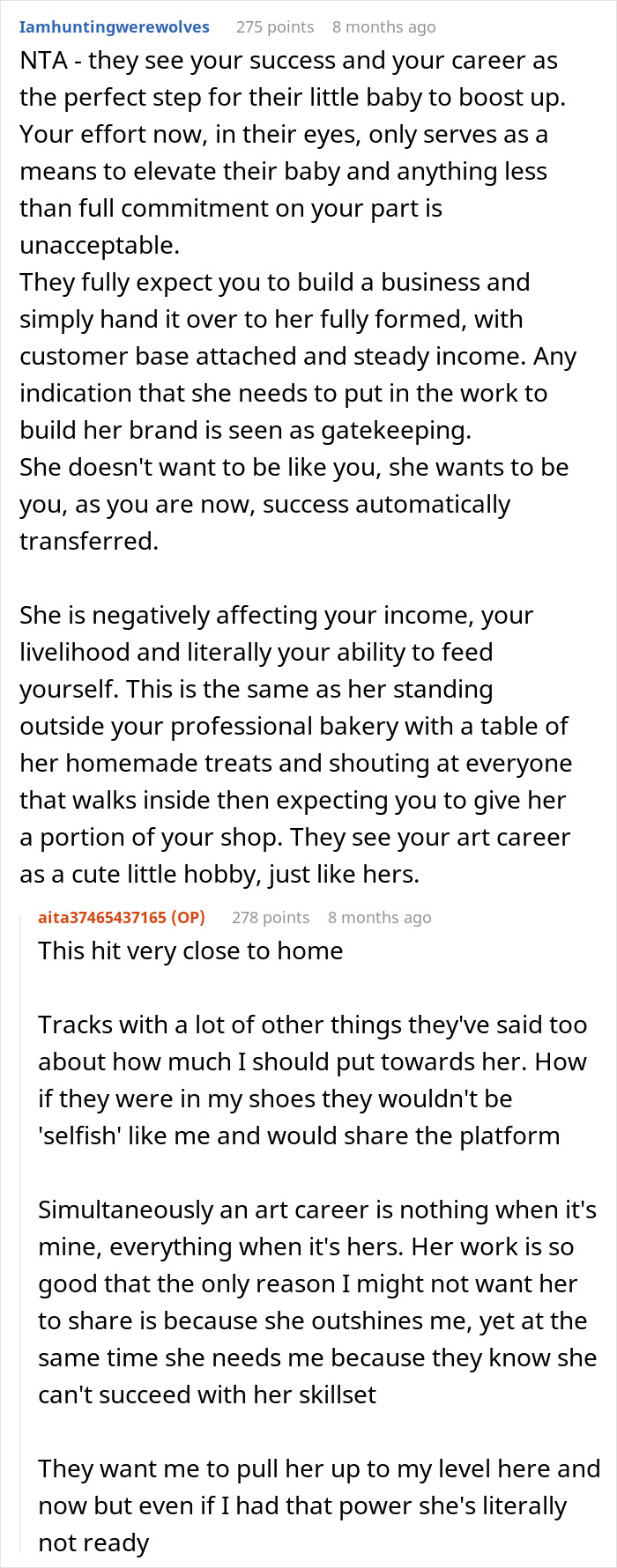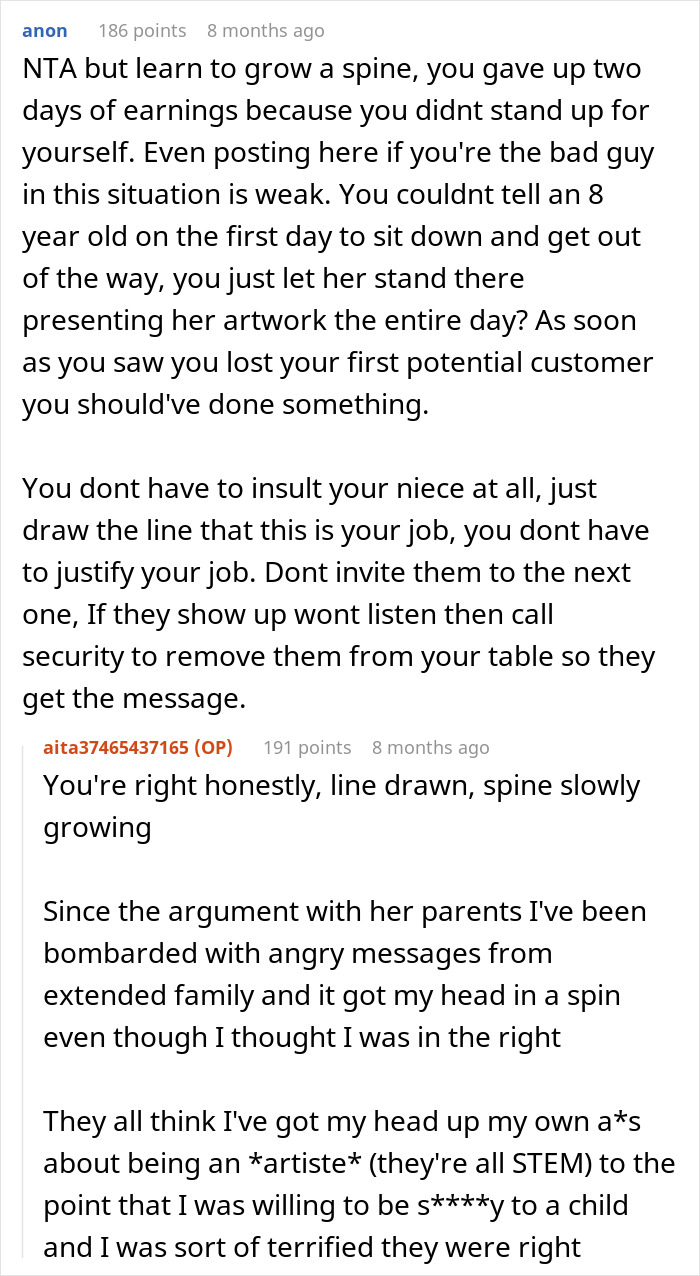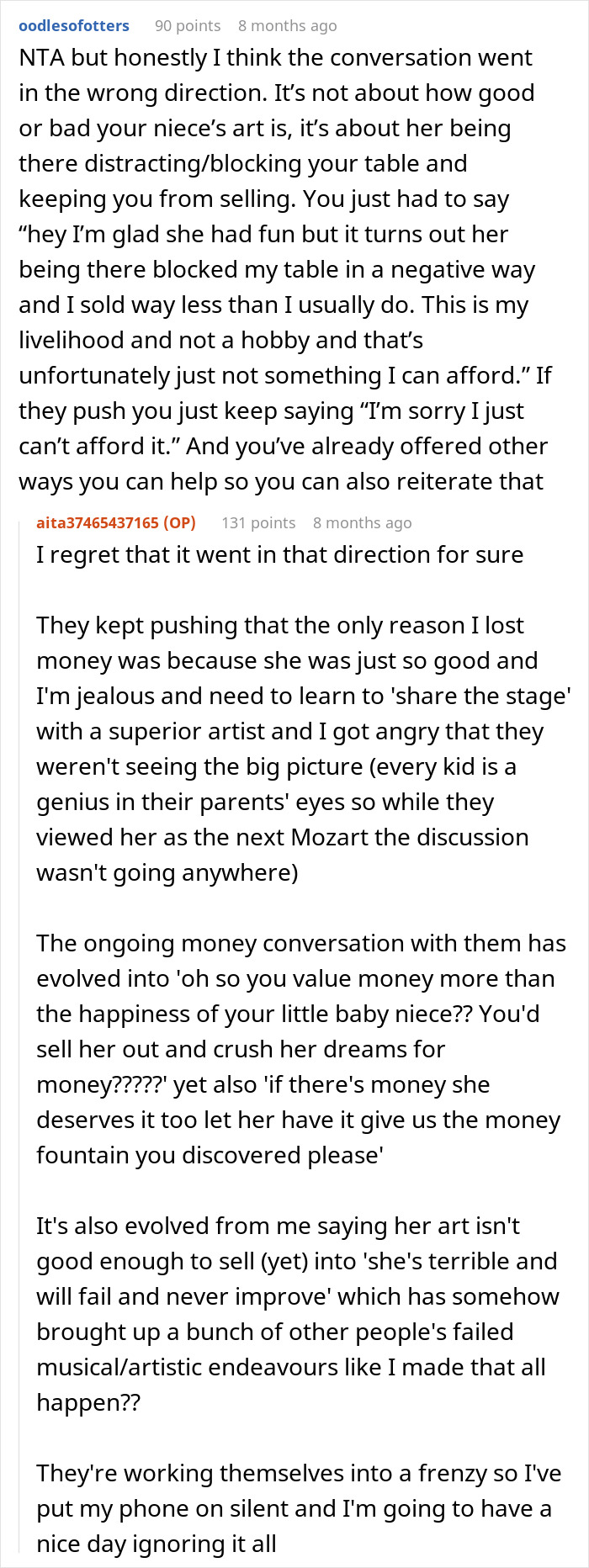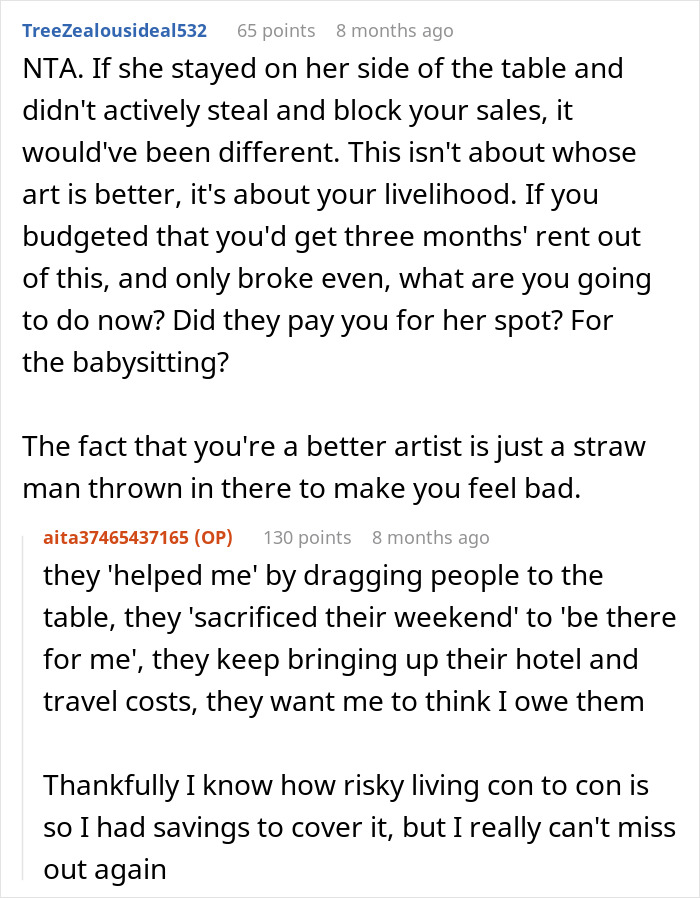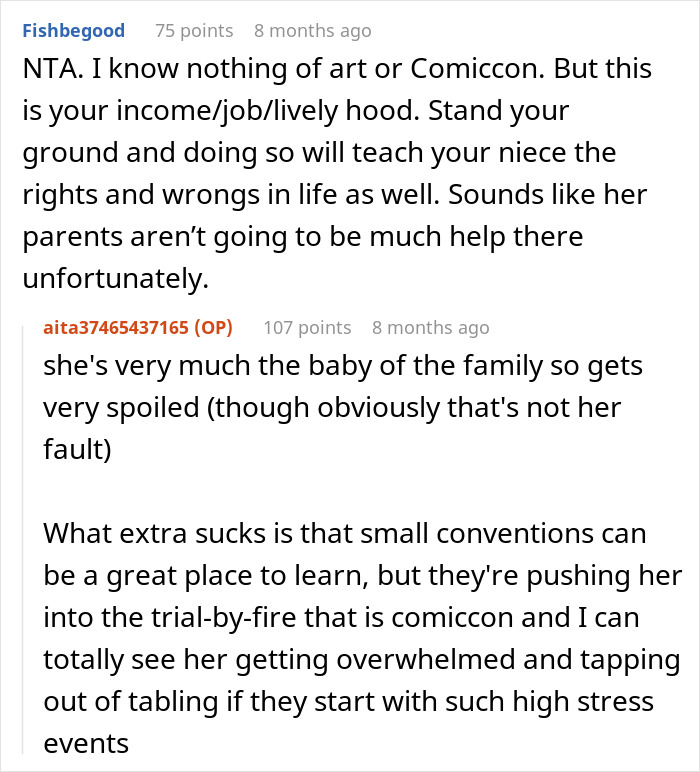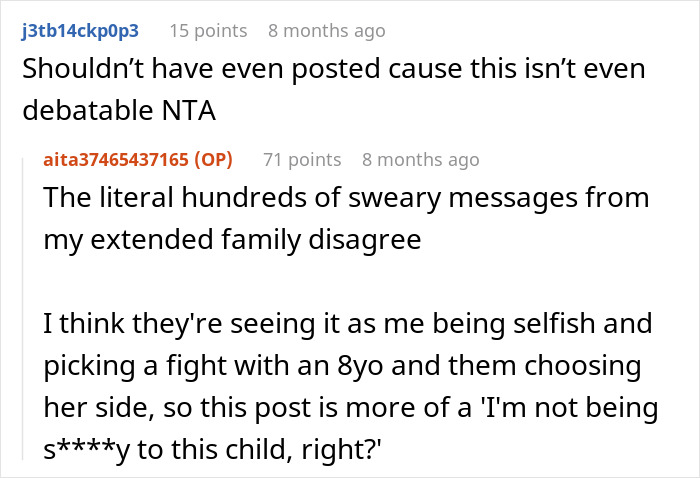An artist is one of those professions that many fail to understand and, therefore, show the respect that it deserves. This woman, for example, has to endure her family members calling her work a hobby. In a candid Reddit post, she said that the situation had gotten so bad that they even used her status to promote her 8-year-old niece, refusing to acknowledge that it had damaged her livelihood.
This artist allowed her 8-year-old niece to have some space on her comic con table
Share icon Image credits: Michael Burrows / Pexels (not the actual photo)
But the girl’s parents thought it was not enough and demanded more
Share icon Share icon Share icon Image credits: Julia M Cameron / Pexels (not the actual photo) Share icon
Share icon Image credits: Liza Summer / Pexels (not the actual photo) Share icon
Share icon Image credits: Timur Weber / Pexels (not the actual photo) Share icon Share icon Share icon Image credits: aita37465437165 Share icon Image credits: Jadson Thomas / Pexels (not the actual photo)
This woman’s family missed so many signs that she’s a professional, it’s as if they didn’t want to admit it
Sometimes, the line between enthusiasts and pros can be blurry. So we got in touch with Matt Tommey, who has been portraying nature through sculptural works of art for three decades, to get a better understanding of how to distinguish them. According to him, a good place to start is taking a closer look at a person’s approach to their craft. “Typically, professionals have developed a recognizable style that is unique to them and desirable to potential clients in the marketplace,” Tommey told Bored Panda. “They have a confident pricing model that allows them to make money on every sale, regardless of whether they sell directly to clients or through partners.” “They have also created a marketing strategy for selling their work that fits their personality, lifestyle, artistic, and income goals. However, one of the most significant factors for artists who can transition from hobbyist to professional is regular studio time,” he highlighted. “Hobbyists tend to be what I call “ENT Artists” — those who only create every now and then.” Professionals, on the other hand, make it a habit. They “create daily, recognizing that their regular studio time is an accelerator for both their income and inspiration.” “Lastly, professional artists treat their art like a business rather than a whimsical passion,” Tommey added. “I always tell my students, ‘You can’t have business dreams with hobby habits.’ In other words, your dreams must be supported by daily habits of creating, marketing, and selling your work. With a clear vision, great work, and commitment to pursuing their art daily, hobbyists can absolutely make the transition to becoming professionals.” Judging from the post, the artist’s family must’ve seen the obvious signs that she’s already an established name in the industry who does this for a living. But maybe, for some reason, they didn’t want to. Tommey believes that the reason why many of us see art as a hobby rather than a profession can be very nuanced. “Most people have a history of some artistic expression as children but, unfortunately, had no context for being able to take that further in their life as a potential career. Consequently, our Western culture often teaches people to value other types of work that seem more able to provide a steady income and downplay careers in the arts,” he said. This suggests that society doesn’t always value artists as much as they deserve. “The typical ‘starving artist’ stereotype and the perception that artists are lazy, unmotivated, and self-absorbed has historically led to artists being undervalued in society.” However, in his opinion, this mindset is gradually changing. “With the rise of the gig economy and solopreneurship, creative people are seeing others who are making a great living from selling their art, giving them context for what might be possible in their own lives. They are learning the power of entrepreneurship to create a life that is both fulfilling and profitable, allowing them to create not only art but also an artistic life that enables them to make a living and make an impact in the world.” Tommey has observed that as people see artists thriving personally, creatively, and financially, that perception shifts to one that values artists as contributing members of society. “They contribute far beyond what they contribute to the economy,” he noted. “Artists offer a varied and beautiful lens through which to see the world. Their perspectives challenge the status quo and invite others to interpret life differently. Through their work, artists offer an invitation to a world that is full of possibility, beauty, truth, and wonder and that is valuable on its own.” Hopefully, the woman’s family will realize that soon.
As her story went viral, the woman joined the discussion in its comments
Share icon
Anyone can write on Bored Panda. Start writing! Follow Bored Panda on Google News! Follow us on Flipboard.com/@boredpanda!

